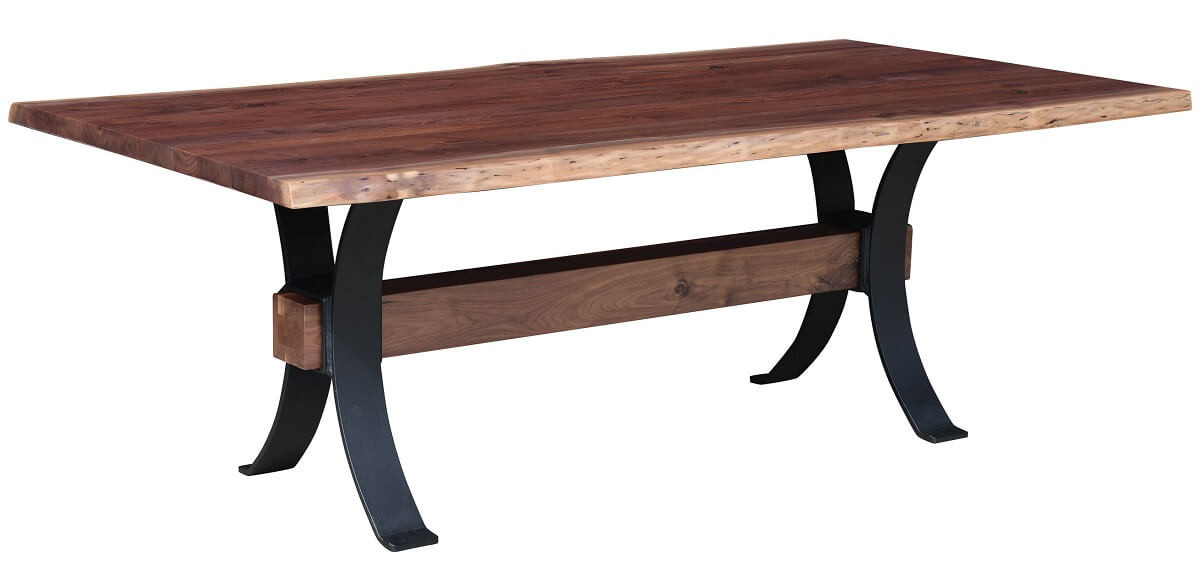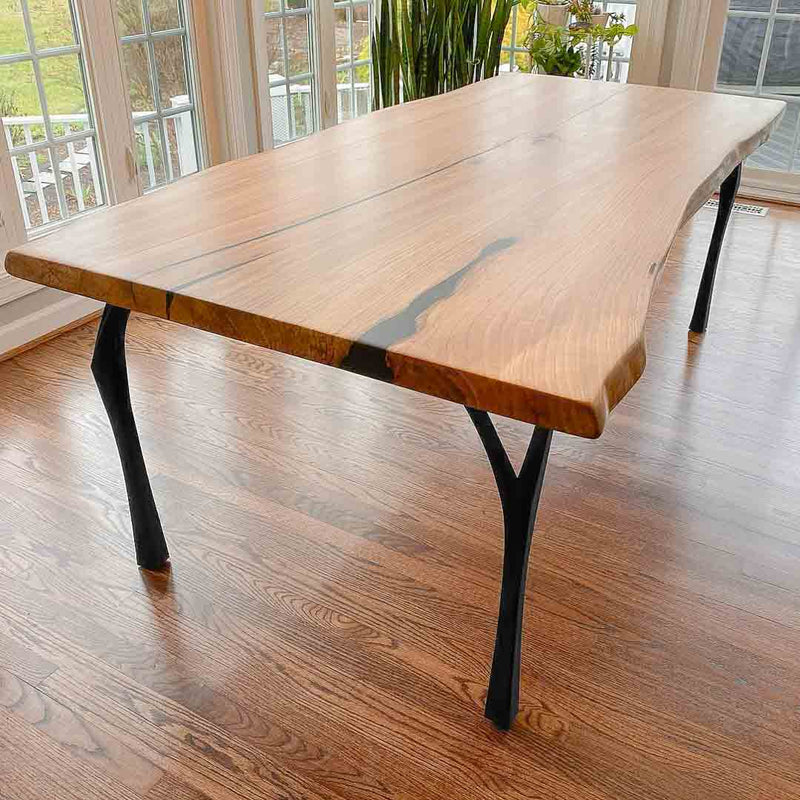From Typical to Modern: Find the Ideal Dining-room Table Legs for Your Design
While classic designs such as cabriole and turned legs stimulate a feeling of timeless class, modern styles like barrette and geometric options provide a chance for striking aesthetic rate of interest. As you think about these aspects, the question stays: just how can you perfectly integrate these varied leg styles to produce a harmonious dining experience?
Understanding Table Leg Styles
The variety of eating room table leg designs can substantially affect both the appearances and capability of the area. Each leg design adds special functional attributes and aesthetic elements, accommodating diverse layout choices and use requirements. Comprehending these styles is important for choosing the ideal dining table that straightens with your general indoor style vision.
As an example, conical legs provide a tidy, traditional appearance that can enhance an area's beauty, while stand bases give security and optimize legroom, making them optimal for smaller rooms. Hairpin legs, a characteristic of mid-century contemporary design, introduce an industrial panache, enabling a ventilated, open feeling. Trestle legs evoke rustic charm, offering durable support and a feeling of timelessness.
Wooden legs can bring heat and structure, whereas metal alternatives typically share a sleek, modern ambiance. Eventually, comprehending table leg designs is vital for creating a cohesive eating location that shows personal style while making certain practicality and comfort.
Standard Table Leg Options
When choosing eating space table legs, standard options often symbolize classic style and workmanship. These layouts mirror a rich heritage and a commitment to high quality, making them excellent for those that value traditional visual appeals.
Among the most famous conventional leg designs is the cabriole leg, defined by its stylish rounded form. This design usually features ornamental makings and is most frequently located in Queen Anne and Chippendale furnishings. One more popular alternative is the transformed leg, which boasts a series of smooth, rounded shapes that offer a classic appearance while keeping security.
Furthermore, the straight leg, while easy, provides a unadorned and strong structure that can mix seamlessly with a variety of tabletop designs. For those attracted to ornate describing, claw-and-ball feet legs stimulate a feeling of magnificence and can serve as a magnificent focal factor in any type of dining area.
Lastly, pedestal bases, although not purely legs, provide an alternative standard alternative that permits ample legroom and can be wonderfully carved. Each of these conventional leg designs contributes to the overall setting of a dining area, marrying function with visual appeal.

Modern Table Leg Layouts
Modern table leg designs offer a diverse series of styles that highlight innovative materials and tidy lines. These styles frequently focus on functionality while acting as striking focal points within an eating space. Minimal visual appeals are prevalent, with legs crafted from materials such as metal, glass, and engineered wood, which add to a modern and airy feel.
One popular layout is the hairpin leg, characterized by its slender, tapered structure that provides stability without frustrating the table top (dining room table legs). This style is frequently located in mid-century modern-day furnishings and can easily enhance various table forms. One more pattern is making use of geometric forms, where legs might tackle unbalanced or angular kinds, adding visual interest and a touch of artistry

Blending Styles for Special Areas
Commonly, property owners look for to produce unique dining spaces that reflect their individual style by mixing various style components. This strategy enables the unification of diverse aesthetics, causing an unified yet distinct environment. Matching a rustic wood table with smooth, contemporary metal legs can create an attractive contrast that boosts the area's overall allure.
Additionally, integrating vintage table legs with modern tabletops can stimulate a feeling of background while maintaining a modern-day sensibility. Such mixes not only showcase private preference however additionally urge creativity, permitting house owners to curate an area that really feels both personal and welcoming.
Color plays an essential duty in this blending procedure; picking table legs that enhance or comparison with the existing color design can enhance visual passion. Whitewashed legs can soften the boldness of a dark table surface area, developing a well balanced aesthetic.
Tips for Selecting the Right Legs
Choosing the right table legs is necessary for accomplishing both capability and aesthetic More Info charm in your eating area. Begin by considering the overall design of your area. Conventional settings take advantage of legs that include intricate carvings or transformed layouts, while modern areas might call for sleek, minimal styles.
Following, assess the elevation and security of the legs. dining room table legs. Common eating tables vary between 28 to 30 inches in elevation, so make sure the legs complement this measurement for convenience. Additionally, robust products, such look at here as wood or steel, can boost security and longevity
Review the leg form too-- choices include directly, tapered, or pedestal layouts. Straight legs use a traditional look, while tapered legs can include a touch of beauty. Pedestal bases supply sufficient legroom and are suitable for smaller rooms.
Final Thought
In recap, selecting the perfect eating room table legs requires cautious factor to consider of both traditional and modern styles. Standard alternatives such as cabriole and turned legs supply classic beauty, while modern designs like hairpin and geometric forms give a contemporary touch. By integrating leg design, height, and product with the general design, a cohesive and welcoming atmosphere can be achieved. Inevitably, the selected table legs must show the preferred visual, improving the eating experience within the space.
The selection of eating area table leg designs can dramatically influence both the aesthetics and performance of the space. Eventually, comprehending table leg designs is important for creating a natural dining more helpful hints location that reflects personal style while guaranteeing functionality and comfort.One of the most famous traditional leg styles is the cabriole leg, defined by its stylish bent shape. Straight legs provide a classic appearance, while tapered legs can add a touch of sophistication.In summary, selecting the excellent dining space table legs calls for careful factor to consider of both standard and modern designs.
Comments on “Simple Steps to Replacing Old Dining Room Table Legs with New Ones”